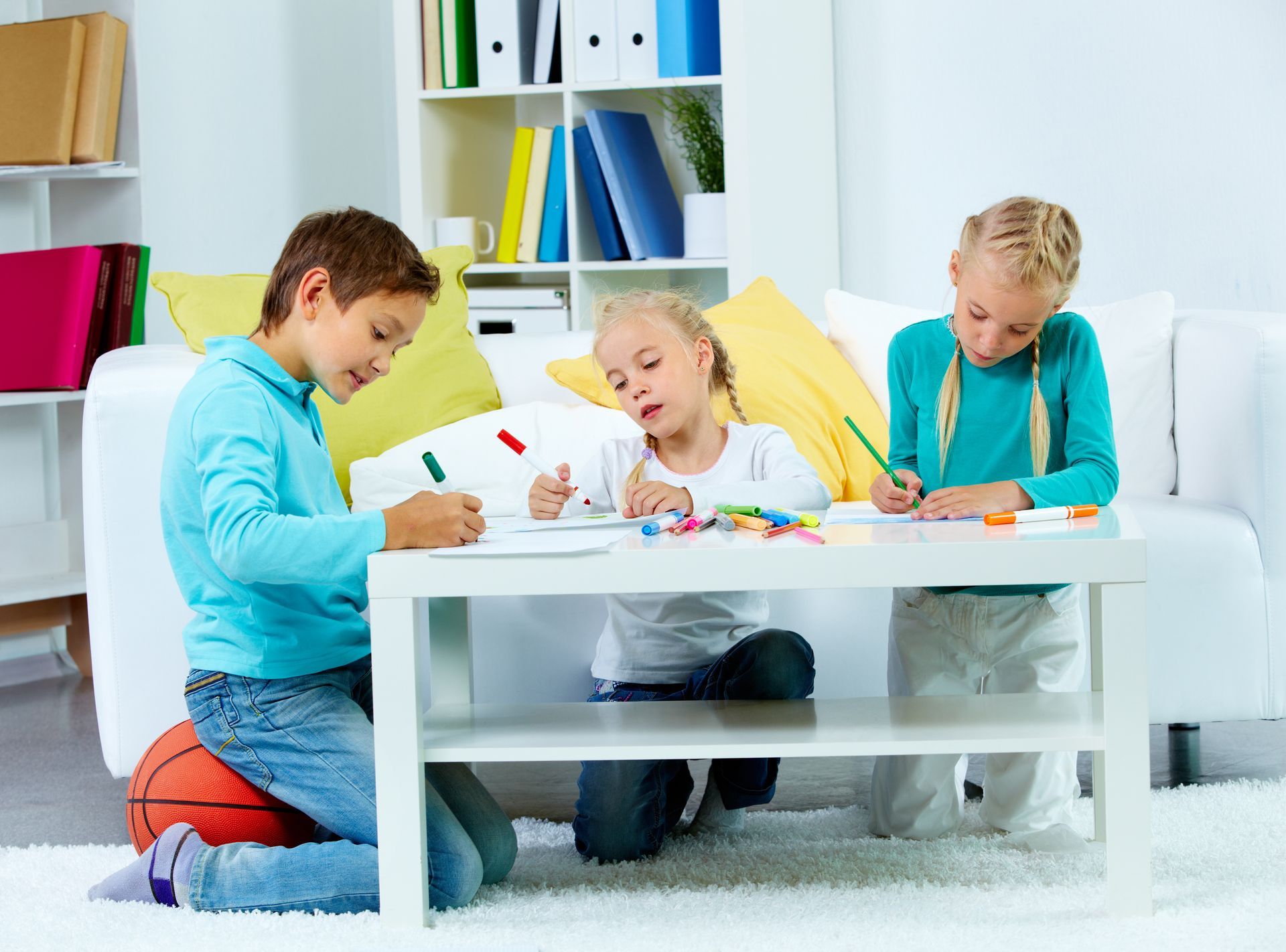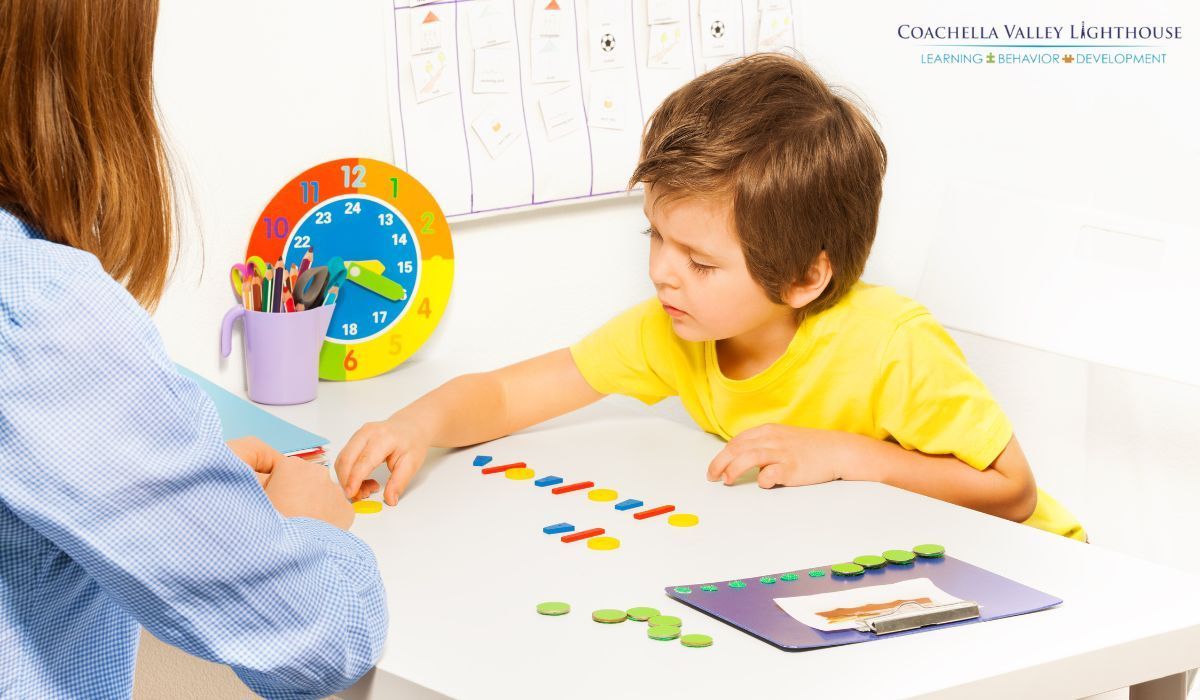Supporting Sibling Relationships in Autism Families Using ABA
Families with a child on the autism spectrum often face unique challenges, and one of the most significant can be the dynamics between siblings. Sibling relationships are a vital part of a child’s social development, yet for families with an autistic child, this dynamic can sometimes be complicated. While siblings of autistic children may be loving and protective, they can also feel frustration, jealousy, or confusion when navigating the behaviors and communication styles of their autistic sibling.
Applied Behavior Analysis (ABA) therapy, a scientifically backed approach to understanding and improving behavior, offers a powerful framework for fostering positive sibling relationships within autism families. ABA can be adapted not only to address the needs of the autistic child but also to improve the interactions between siblings, enhancing both their individual and collective well-being.
In this blog post, we will explore how ABA therapy can support sibling relationships in autism families. We will also discuss techniques and strategies that parents can use to strengthen these relationships, ensuring that every child in the family feels seen, supported, and valued.
Understanding the Unique Challenges in Sibling Relationships
Before delving into ABA strategies, it's important to recognize the complexities inherent in sibling relationships within autism families. These challenges are unique to each family, but they often stem from:
Communication Barriers: Autistic children may have difficulty expressing themselves or understanding their siblings’ words and actions. This can create frustration or confusion on both sides.
Behavioral Differences: The behaviors associated with autism, such as repetitive actions, sensory sensitivities, or meltdowns, can be difficult for neurotypical siblings to understand or manage. They may struggle with how to respond or feel frustrated by the different rules applied to their autistic sibling.
Imbalanced Attention: Parents often need to devote significant time and attention to their autistic child, leaving siblings feeling overlooked or less valued. This imbalance can lead to feelings of resentment or jealousy.
Social Dynamics: Siblings may face social challenges due to the stigmatization or misunderstanding of autism from peers. This can create tension, particularly if they feel the need to explain or defend their autistic sibling’s behavior in public or at school.
These challenges, while significant, can be addressed with thoughtful strategies rooted in ABA principles that help foster understanding, communication, and cooperation between siblings.
The Role of ABA in Supporting Sibling Relationships
ABA therapy focuses on improving socially significant behaviors and can be customized to address the specific needs of both the autistic child and their siblings. It is a highly flexible therapy that can target communication, social skills, and emotional regulation, all of which are critical in fostering positive sibling relationships.
Here’s how ABA can support sibling relationships in autism families:
Teaching Effective Communication
One of the key components of ABA is improving communication, both for the autistic child and their neurotypical siblings. ABA therapists often use a variety of communication techniques, including verbal behavior strategies, picture exchange communication systems (PECS), and assistive technology. These techniques can help an autistic child better express their needs, thoughts, and emotions.
For siblings, ABA can be used to teach active listening and patience, helping them understand their autistic sibling’s communication style. ABA therapists can work with siblings to:
- Recognize and interpret non-verbal cues.
- Understand the need for patience when their autistic sibling is trying to communicate.
- Respond appropriately to their sibling’s communication attempts.
By improving communication between siblings, ABA helps to reduce misunderstandings, frustration, and meltdowns, paving the way for more positive and constructive interactions.
Building Social Skills
Social skills deficits are a hallmark of autism, and ABA therapy is particularly effective at addressing these deficits. Sibling relationships are, at their core, social relationships, and helping an autistic child develop better social skills can significantly enhance their bond with their siblings.
Through structured play and joint activities, ABA can teach autistic children skills such as:
- Turn-taking: Understanding and practicing turn-taking can make games and shared activities more enjoyable for both children.
- Sharing: Many autistic children struggle with the concept of sharing, and ABA can help them learn how to share toys, space, or attention in a way that feels manageable.
- Perspective-taking: ABA can also help autistic children understand the perspectives of others, including their siblings, which can reduce conflicts and enhance empathy.
At the same time, ABA therapists can guide siblings in developing their own social skills, such as:
- Initiating positive interactions: Neurotypical siblings can be taught how to engage their autistic sibling in a way that is supportive and respectful of their needs.
- Recognizing triggers: ABA can help siblings identify situations or behaviors that may trigger stress or anxiety in their autistic sibling, enabling them to adjust their behavior accordingly.
Reducing Problematic Behaviors
ABA is well-known for its effectiveness in reducing problematic behaviors, such as aggression, self-injury, or tantrums. These behaviors can be particularly stressful for siblings, who may feel afraid or overwhelmed when they occur.
ABA helps families identify the triggers for these behaviors and develop strategies to manage or prevent them. Siblings can play an important role in this process by learning how to:
- Recognize early warning signs of a meltdown or tantrum.
- Stay calm and avoid escalating the situation.
- Provide support or comfort when needed.
Involving siblings in the behavior management process can not only reduce the frequency of problematic behaviors but also help siblings feel more empowered and less fearful when these situations arise.
Promoting Emotional Regulation
ABA therapy also focuses on helping children with autism develop emotional regulation skills. This can be particularly important in sibling relationships, where emotions can run high due to misunderstandings or unmet expectations.
Through ABA techniques such as reinforcement, prompting, and modeling, children can learn to:
- Recognize their own emotions and those of others.
- Develop strategies for managing stress, frustration, or anger.
- Respond calmly and appropriately to challenging situations.
Siblings can benefit from learning emotional regulation skills as well. ABA can teach them how to cope with the unique emotional demands of having an autistic sibling, such as:
- Handling feelings of jealousy or resentment.
- Managing their own stress or frustration when their sibling is struggling.
- Expressing their own emotions in a healthy and constructive way.
Creating Positive Shared Experiences
One of the most powerful ways to build a strong sibling relationship is through shared positive experiences. ABA therapists often incorporate family activities into their treatment plans to foster these moments of connection. Structured play, cooperative tasks, and shared goals can be tailored to the interests and abilities of both the autistic child and their siblings.
For example, ABA may incorporate activities such as:
- Collaborative games: Board games or interactive video games that require turn-taking and cooperation can be great tools for building positive sibling interactions.
- Outdoor activities: Nature walks, swimming, or playground time can create opportunities for shared enjoyment, especially when tailored to the sensory preferences of the autistic child.
- Art and music projects: Creative activities can be a fun and low-pressure way for siblings to engage with one another, while also developing patience and cooperation.
By facilitating these kinds of positive shared experiences, ABA helps siblings bond and create memories that transcend the challenges they may face.
Techniques for Parents to Strengthen Sibling Relationships
While ABA therapy offers invaluable support for sibling relationships, parents play a critical role in fostering these bonds. There are several strategies parents can use at home to reinforce the lessons learned in ABA and create a harmonious family dynamic.
Encouraging Empathy and Understanding
It’s important for siblings to understand that their autistic brother or sister has unique needs. Parents can help foster empathy by:
- Educating siblings about autism: Help your neurotypical children understand what autism is and how it affects their sibling. This can reduce confusion and frustration.
- Modeling empathetic behavior: Show your children how to respond with patience and understanding when their autistic sibling is struggling.
- Encouraging questions: Make it safe for your children to ask questions about autism and their sibling’s behavior. Open communication can prevent feelings of confusion or resentment.
Setting Aside Special Time for Each Child
Sibling relationships can become strained when one child feels they are getting less attention than the other. To mitigate this, parents can:
- Schedule one-on-one time with each child: Make sure to spend individual time with each of your children, engaging in activities that they enjoy.
- Recognize each child’s achievements: Celebrate milestones for all your children, ensuring that no one feels overlooked.
- Acknowledge feelings of jealousy: If a sibling expresses feelings of jealousy or frustration, acknowledge those feelings without judgment and discuss ways to address them.
Creating Fair but Flexible Rules
Having a child on the autism spectrum may require different sets of rules or expectations, but it’s important to maintain fairness in the family dynamic. Parents can:
- Set clear expectations: Let your neurotypical children know what behaviors are expected from them and why their autistic sibling may have different rules.
- Involve siblings in the rule-making process: Allow your children to have a say in the household rules, which can give them a sense of ownership and fairness.
- Be transparent about accommodations: Explain why certain accommodations, such as sensory-friendly environments or adjusted bedtimes, are necessary for your autistic child.
Promoting Conflict Resolution
Sibling conflict is inevitable, but teaching children how to resolve their disagreements in a healthy way is crucial for maintaining a positive relationship. Parents can:
- Teach problem-solving skills: Use ABA-based techniques like role-playing or guided discussions to teach siblings how to resolve conflicts peacefully.
- Encourage compromise: Help your children understand the value of compromise, especially when their autistic sibling’s needs may conflict with their own desires.
- Set a positive example: Model conflict resolution by showing your children how to navigate disagreements with empathy and patience.
Seeking Support
Supporting sibling relationships in autism families can be a complex task, and it’s important for parents to seek support when needed. This may include:
- ABA therapy: ABA therapists can provide targeted interventions to improve sibling relationships and address specific challenges.
- Parent support groups: Joining a support group for parents of children with autism can provide valuable insights and strategies for managing sibling dynamics.
- Family therapy: In some cases, family therapy may be beneficial in addressing deep-seated conflicts or emotional challenges.
Strengthen Family Bonds with ABA Support from Coachella Valley Lighthouse
Sibling relationships in autism families can be both challenging and rewarding. By incorporating ABA strategies and techniques, parents can support the development of positive, nurturing, and lasting bonds between their children.
Whether it's improving communication, promoting social skills, or reducing behavioral challenges, ABA provides a flexible and effective approach to fostering harmony within the family.
At Coachella Valley Lighthouse, we understand the unique dynamics that autism families face, and we are here to help you navigate them.Call Coachella Valley Lighthouse at 760-625-0951 to learn more about how our ABA services can support your family’s needs and strengthen sibling relationships.
FAQs
How does ABA therapy help improve communication between siblings in autism families?
ABA therapy teaches both the autistic child and their neurotypical sibling how to communicate more effectively. For the autistic child, techniques like verbal behavior strategies, picture exchange communication systems (PECS), and assistive technology help them express their needs and emotions. Siblings learn to recognize non-verbal cues, practice patience, and respond appropriately to their autistic sibling’s communication style. This improved understanding reduces frustration and leads to more positive interactions.
What role does ABA play in helping siblings manage behavioral challenges associated with autism?
A2: ABA is highly effective at reducing problematic behaviors, such as tantrums or aggression, by identifying triggers and developing strategies to manage them. Siblings can learn how to recognize early warning signs of meltdowns, stay calm during stressful situations, and provide comfort when necessary. Involving siblings in the behavior management process not only reduces the occurrence of challenging behaviors but also helps them feel more confident and empowered.
How can ABA therapy promote positive shared experiences between autistic and neurotypical siblings?
A3: ABA therapy encourages structured play, collaborative games, and joint activities that are tailored to the abilities and interests of both children. This helps siblings bond over positive experiences, whether it's through turn-taking games, outdoor activities, or creative projects. By promoting cooperation and shared enjoyment, ABA strengthens the emotional connection between siblings, making their relationship more fulfilling.
How can parents use ABA techniques at home to support sibling relationships?
A4: Parents can reinforce ABA techniques by encouraging empathy, setting aside special time for each child, and creating fair yet flexible household rules. Educating neurotypical siblings about autism, modeling empathetic behavior, and acknowledging their feelings helps create an environment of understanding. Additionally, teaching problem-solving skills and conflict resolution techniques helps siblings navigate their differences more constructively.
What is the benefit of involving siblings in ABA therapy sessions?
A5: Involving siblings in ABA sessions allows them to learn the same communication and behavior management strategies as the autistic child, which promotes consistency and understanding at home. Siblings can play an active role in improving their relationship by practicing patience, empathy, and appropriate responses to their autistic sibling's needs. This joint learning experience helps build stronger, more supportive sibling bonds over time.



LOCATIONS:
78900 Avenue 47, Suite 105,
La Quinta, CA, 92253
Phone: 760.625.0951
Fax: 760.564.5049
Monday - Friday 10:00 a.m. - 6:00 p.m.
© 2021 Coachella Valley Lighthouse. All Rights Reserved.








